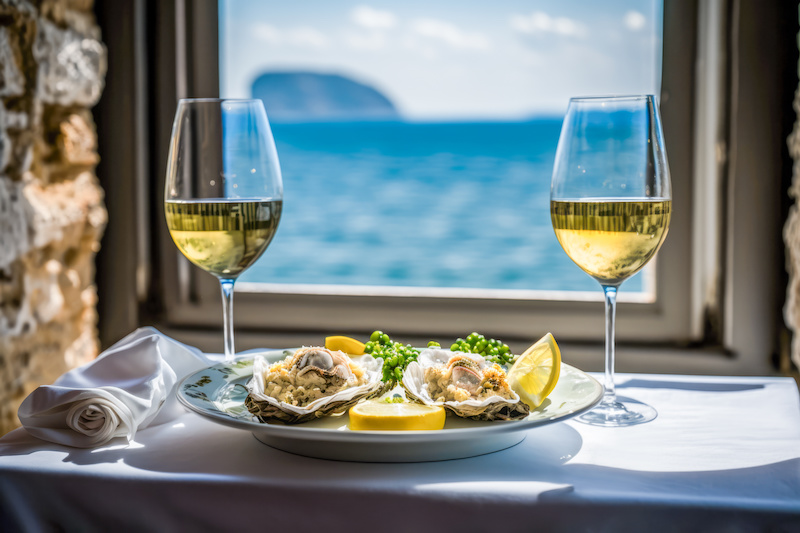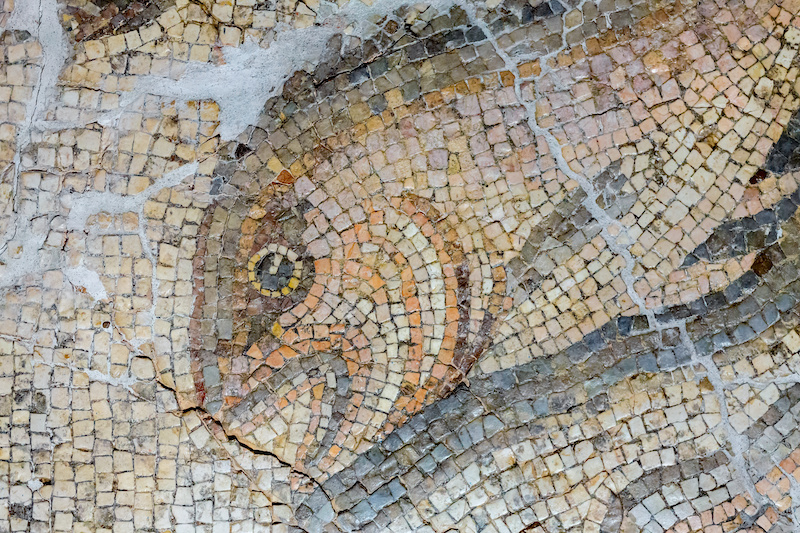Eat Like an Aristocrat with These Ancient Seafood Recipes
Seafood was a favorite of ancient Roman and Greek aristocracy. Why not eat as they did?
Apr 19, 2023
Imagine you are a guest at a banquet in ancient Greece or Rome more than 2,000 years ago.
Your first course might be raw oysters in the shell, opened for you at the table. Later in an especially sumptuous meal, you might be served mussels and the head of a sea bass. Both were considered great delicacies.
The treasures pulled from the briny deep and presented to aristocracy make it clear. Ancients prized seafood as delicious and health-promoting. In this, as in so much, they were absolutely correct.

Let's not forget that those Greeks established the first democracy. And the Romans gave us roads and aqueducts, concrete and central heating. These are civilizations with wisdom to emulate today.
So let's set aside the latest breakthroughs in seafood culinary art, and take a closer look at our distant ancestors' views about seafood.
It's classy!
In the ancient world, as we now are impressed when a host produces lobster or caviar, serving seafood was a sign of wealth and status.
Sturgeon, the fish whose eggs sell for top dollar today, was presented with elaborate rituals at Greco-Roman banquets. The Roman poet Martial judged it worthy of a spot on the luxurious tables of the Palatine Mount, the most ancient of the seven hills of Rome its flesh was compared to the ambrosia of the gods.
Whiting, a ray-finned species related to cod but less flavorful, also had a place of honor, according to the Roman writer Pliny the Elder. “This fish, like the sturgeon, was surrounded with the ridiculous honours of an almost divine pomp by Romans. It was served interwoven with garlands, and trumpeters accompanied the slaves who, with uncovered heads and foreheads crowned with flowers, brought to the guests this dish, the merit of which was, perhaps, exaggerated by capricious fancies."
In ancient writings, accolades were accorded fish of all types. One writer in the fourth century BCE was unequivocal: “Any man who goes to market to get some delicacy and prefers to buy radishes when he may enjoy real fish must be crazy."
The Roman gourmet Apicius, who some credit with writing the only surviving cookbook of the Greco-Roman world, is said to have sailed personally to Libya in search of particularly large prawns.
One wealthy Roman built a fishpond to grow and fatten oysters with a food that included cooked wine, selling the oysters at a good profit.

Ancient Seafood Recipes - How Did They Cook?
The Greeks turned mackerel into alec, a paste that might be spread on bread. They steamed shellfish, put fish into soups, and pan-fried, grilled, roasted and baked fish in clay vessels. Fish sometimes was stuffed with wild herbs including the precious yellow-flowered herb silphium that was once stockpiled alongside gold by Emperor Julius Caesar.
Here's the Greek comic playwright Aristophanes:
A: So, then, as for the glaukidion [small owl], I'm ordering you to stew it in brine, like the other times.
B: What about the little sea-bass?
A: Roast it whole.
B: The dogfish?
A: Stew it in a sauce.
B: The eel?
A: Salt, marjoram and water.
B: The conger eel?
A: Ditto.
B: The skate?
A: Green herbs.
B: There's also a tuna steak.
A: Roast it.
Everyday seafood
Along the coast, anchovies and sardines were abundant and within reach for ordinary people. But few could afford the luxuries that were flaunted at banquets. Instead, they had a wide choice of salted, dried or pickled fish and could shop at markets dedicated to such products. Athens imported salted fish from as far as Byzantium in the east and Sicily and Hispania in the west.
Seafood was considered good for you.
The U.S. Dietary Guidelines recommends that we eat at least a cup (roughly eight ounces) of seafood a week.

Ancient Greek doctors had an inkling of what modern science would eventually conclude.
Hippocrates (fifth century BCE), called the father of modern medicine, argued that the best fish would produce good blood. One of his treatises discusses 48 species of fish.
Further descriptions of the benefits of fish came from the physician Diocles of Carystus (fourth century BCE) and physician Galen (129–216 CE). For example, Galen writes that pickled fish from Cadiz, in southwestern Spain, are especially beneficial and could thin "thick, viscid humours." (The medicine of the time revolved around finding balance between four liquids, translated as humours). Tuna packed in jars in Cadiz was highly-prized.
One doctor recommended eating the tail of swordfish with mustard as a remedy. Sole also specifically was prescribed for the sick. In a recipe from Apicius' cookbook, he writes: “Skin the soles, place in a sauce pan, add broth, oil, white wine, a bunch of leeks and coriander seed, place on fire, grind a little pepper, oregano, moisten with the fish liquor, take 10 raw eggs, beat them and mix with the remaining liquor; put it all back over the fish, and on a slow fire allow to heat without boiling and thicken to the right consistency; sprinkle with pepper."
In short, our distant ancestors saw seafood's advantages in much the same way the wise of today see them - as impressive, delicious, healthful.
How they would have loved a modern improvement - convenience! Imagine the odes they would have written to a lovely box of frozen wild seafood arriving on the doorstep!







